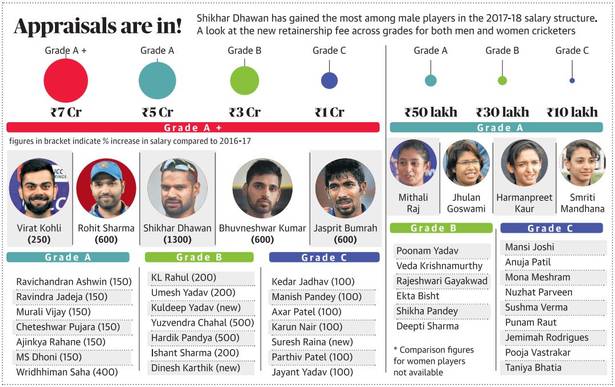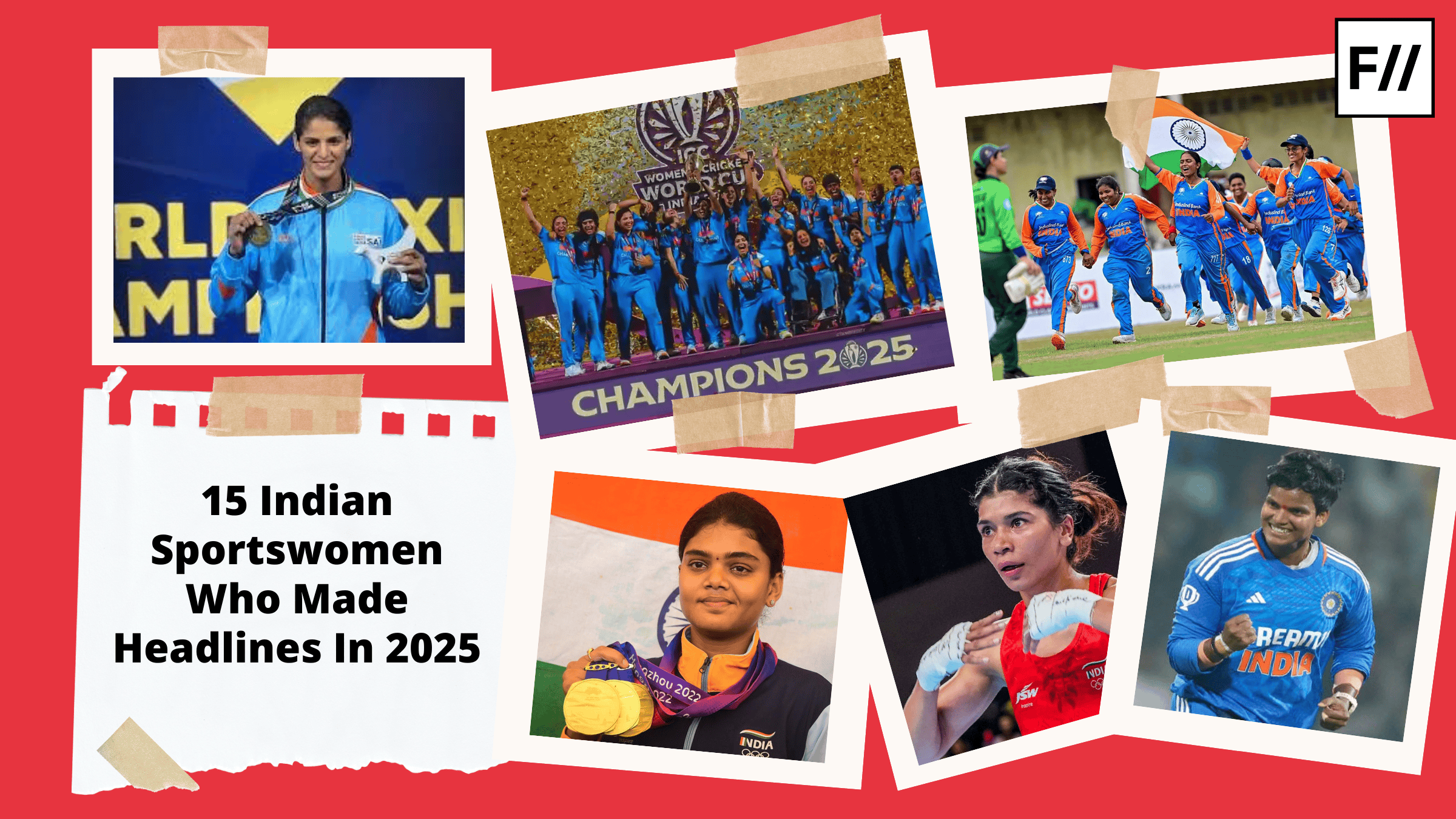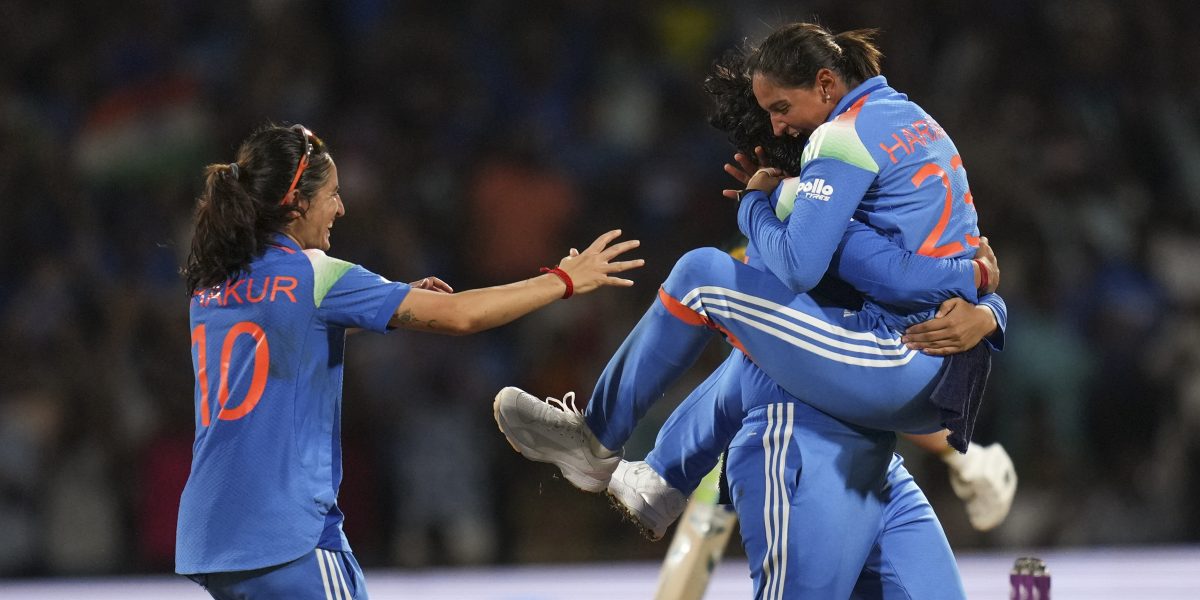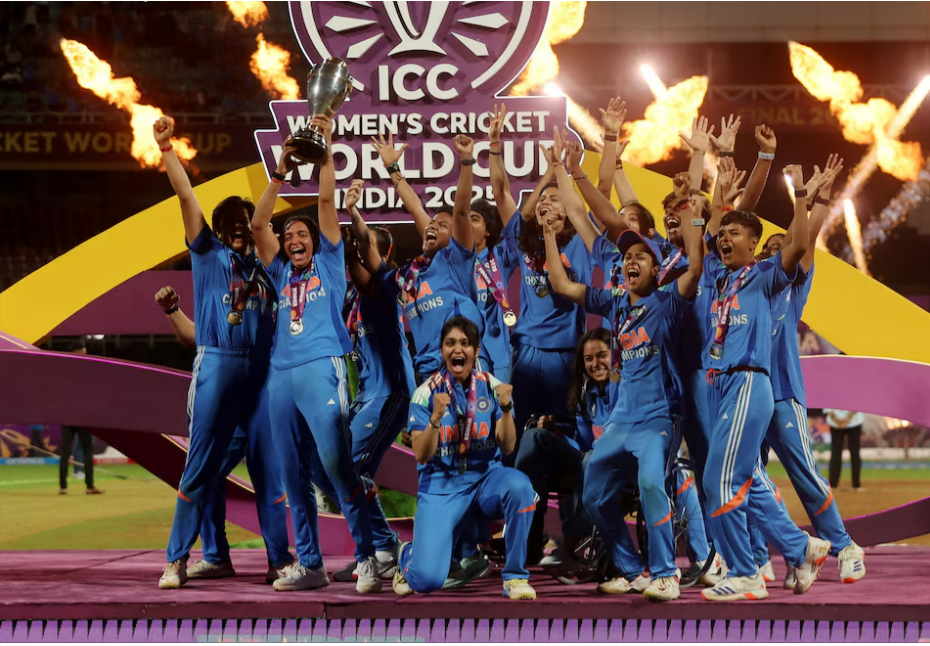On June 5, Forbes released its list of ‘World’s Highest-Paid Athletes‘ for 2018. While the Indian Cricket team captain, Virat Kohli is #83 on the list and the only Indian, even more striking aspect of the list is that it is an ‘all-male affair’. No woman features on the list. Let that sink in.
The ‘World’s Highest-Paid Athletes 2018’ compilation, topped by 41-year old boxer Floyd Mayweather, quite clearly represents and brings on surface the problem of gender wage gap in sports.
Forbes released its list of ‘World’s Highest-Paid Athletes’ for 2018, which was an ‘all-male affair’. No woman features on the list.
According to UN Women, “Sport has the power to transcend boundaries of sex, race, religion and nationality. It promotes health and wellness, improves self-esteem, and teaches leadership, team skills and perseverance. Women in sport defy gender stereotypes, make inspiring role models, and show men and women as equals.”
The reality is in sharp contrast to this, especially, as far as the wage gap between male and female athletes is concerned. Even though there has been a tremendous increase of women’s participation in sports, the facility, the salary and the funding provided to these athletes lag far behind to what is entitled to male athletes.
The gender wage gap in sports exists as a result of sexism and inequality, the same forces that lead to gender wage gap in the wider context. Society, largely, views women as fragile and weak and hence, not ‘good-enough’ for sports. Women’s treatment in sports has always been a manifestation of wider gender inequality, and with evolution of sports it came to perpetuate itself on a larger scale.
Along with wage disparity, women are provided with fewer opportunities to participate in sports and are often encouraged to take ‘less aggressive’ professions. When women do take up sports, they come across numerous other hurdles: inadequate fundings, lack of coaching and training facilities as compared to those enjoyed by men, and the stupendous stumbling block of sexual harassment, creating deplorable and perilous environment for women athletes.
Last year in December, a 15-year old national level discuss throw player, from Bengaluru, accused her 52-year old coach of sexual harassment and molestation. The media was flooded with these reports.
Quite recently, on June 6th 2018, the Sports Authority of India (SAI) sacked a coach and an official at one of its centres in Tamil Nadu, on the grounds of sexually harassing junior campers. Although, after the incident SAI vowed to take strict preventive measures such as starting helplines to ensure safe campuses in its training institutes, these incidents reveal the dark and grim reality of Indian sports for women.
The US Women’s Soccer team also faced significant sexism. The US Men’s Soccer team got knocked out before making it to the 2014 World Cup Finals, still they received more money than the women’s team, who emerged victorious in the championship.
In April 2016, five members of the US Women’s Soccer team filed wage discrimination case against the US Soccer Federation. After a year-long contentious battle over equal pay, US Women’s Soccer team finalised a deal for better pay.
Closer at home, if we take the example of cricket, undoubtably, the most popular sport in India, we would come across a humongous difference in the wage of male and female players.
On March 7, Board of Control for Cricket in India (BCCI) announced new contracts for its players and a revised salary structure. For the first time, since 2015, women cricketers’ pay scale was revised.
However, the pay scale of male cricketers is more than female players by more than ten fold. A male cricketer, belonging to the A+ category receives a compensation of 7 crores, whereas, the A+ category does not exist in women’s team, and the highest grade (A) retainer fee is a mere 50 lakh (increased from 15 lakh). In this pay structure, the last category of male cricketers’ (C) fees is twice (1 crore) than that of a female A grade cricketer.

Image Source: The Hindu
This decision came on the eve of International Women’s Day, and many people slammed BCCI for being misogynist and biased.
the last category of male cricketers’ (C) fees is twice (1 crore) than that of a female A grade cricketer.
Likewise, gender pay gap was bought in focus, when in 2015, Dipika Pallikal, India’s top-ranked squash player, opted out of the National Squash Championship for the fourth year in a row. Pallikal was protesting against the disparity in prizes handed out to the male and female sports persons. While in the men’s championship the winner received an amount of INR 1,20,000, women only received INR 50,000.
Many people argue that the difference in pay and compensations is due to the fact that men’s sports team or sports persons fetch a larger audience and hence have greater market and financial value. It is true, but it is part of the problem. Men’s league fetch greater revenue and income due to high ratings and attendance, which can be traced back to inherent cultural and historical biases discouraging women’s participation in sports, and as result women’s sporting events lack support and validation.
Further, there is no proper talent scouting, no sponsors for the game and the media doesn’t highlight achievements of women sports teams as much.
The growing commercialisation and advertisement of sports is one of the factors that contribute to the pay discrepancy. In cricket for example, the top male players consistently earn more in sponsorships and advertisements. Tennis is one sport in which men and women receive the same prize money in big championships like the Grand Slam Titles. However, even after ensuring same prize money for both men and women, clearly there is a staggering difference in the endorsements and sponsorships.
Throughout the 2017, women’s football teams stood for parity in income with their male counterparts, but it was in Norway that this demand turned into reality. Norway’s footballers signed a historic equal pay agreement in December 2017, that will ensure that all international male and female footballers were paid the same wages.
There is a cause for optimism in the rising popularity of women’s sports, increase in the spending, and better training and coaching facilities attracting more spectators with each passing year. Women are participating in all major sporting events.
Norway’s footballers signed a historic equal pay agreement in December 2017, that will ensure that all international male and female footballers were paid the same wages.
Rio Olympics 2016, bought in forefront the determination, talent, and triumph of many Indian female athletes. PV Sindhu, Sakshi Malik, Deepa Karmarkar and Lalita Babar are some of the names who carved out success, even in tough circumstances. PV Sindhu and Sakshi Malik bough back home a silver and a bronze medal, respectively, the only two medals India won, making Rio Olympics an ‘all-female’ affair for India.
However, there are still numerous obstacles for women athletes, and they are rooted in deep social, cultural and historical practices which enforce patriarchal and misogynistic ideals. Forbes 2018 list of highest-paid athletes is a clear indicator of the disparity and discriminations faced by women athletes all over the world.
Also read: How Does Mainstream Media Represent Sportswomen?
Featured Image Source: Forbes
About the author(s)
Prerna is a history undergrad student who spends most of her time reading, dancing and arguing why everyone should be a feminist.





Can’t believe Serena Williams doesn’t make top 100. This is a list of international shame. Like pollution, we are all to blame, all responsible.